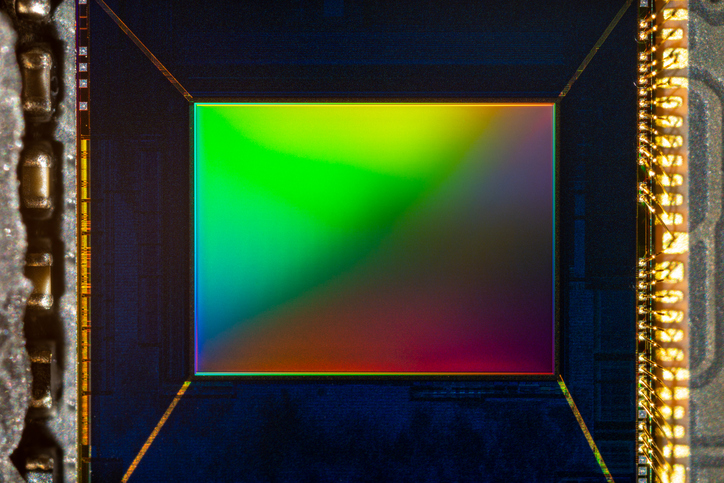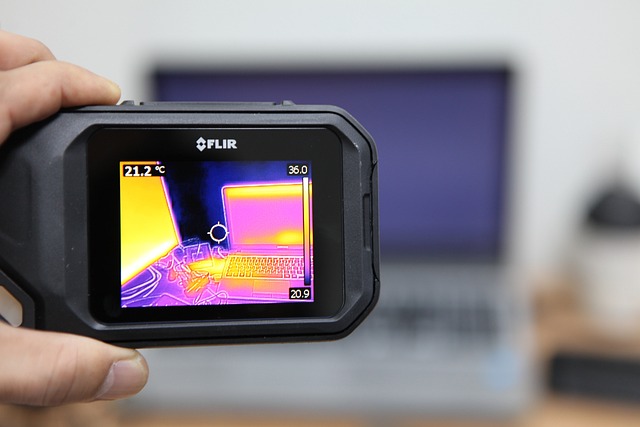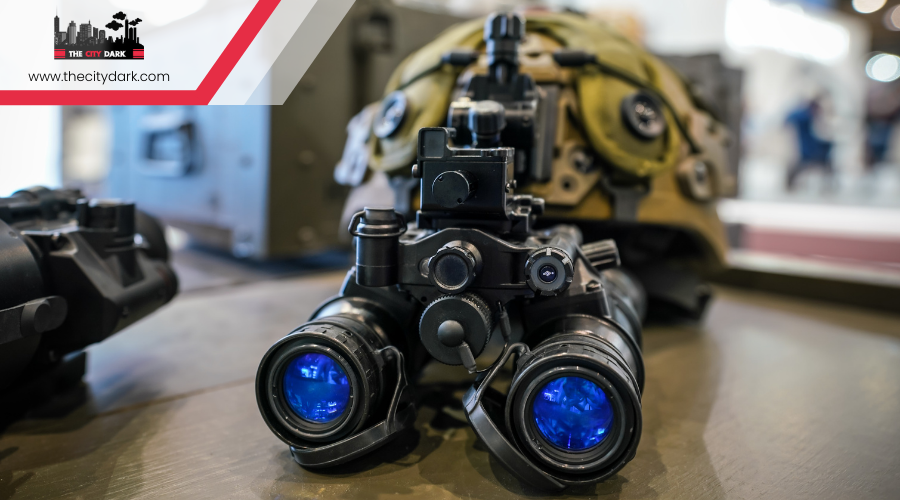Night vision technology is evolving through the use of cutting-edge technologies like CMOS sensors, which provide clearer images, and AI algorithms that enhance vision to mimic the human eye. It now includes ultra-sensitive sensors that deliver unmatched clarity in complete darkness. The use of large aperture lenses allows for wider and brighter views, and supplemental lighting ensures you remain unseen. Color night vision has become a reality, offering vibrant views in low light conditions. The integration of AI enhances threat detection and situational awareness by analyzing data in real-time. These advancements together are redefining visibility in the dark, pushing the limits of nocturnal capabilities. Discover how this changes your experience at night.
Key Takeaways
- Night vision pairs with CMOS sensors to boost low-light image quality and resolution, making images clearer.
- AI algorithms refine night vision, drawing from the human visual system to improve sight in dim light.
- Night vision systems use ultra-sensitive sensors to enhance faint light, creating crisper images in darkness.
- They incorporate large aperture lenses to brighten and clarify images, performing better in low light.
- They also adopt supplemental lighting to better visibility while keeping the user hidden, increasing contrast and clarity in night vision gadgets.
CMOS Sensor Integration

Incorporating CMOS sensors into night vision devices dramatically improves the quality and sensitivity of images in low light. These sensors stand out for their high resolution and minimal noise, offering a clear advantage over traditional image intensifiers. In conditions where light is scarce and details are critical, the benefits of CMOS sensors shine through. They not only enhance color fidelity but also deliver a more detailed and vivid view of the nocturnal world.
The transition to digital night vision, driven by CMOS technology, transforms the experience of seeing in the dark. It brings the night to life with extraordinary clarity. This shift allows for the capture and processing of images with unprecedented precision, making your night vision device not just a tool for seeing in the dark but a window to a previously unseen world.
Furthermore, the adoption of CMOS sensors in night vision technology signifies a major advance in the ability to process images. This evolution is not merely about improved night vision; it represents a complete transformation of the visual experience, offering enhanced visibility and detail like never before. With CMOS sensors, you are fully prepared to explore the deepest shadows, ready to discover what lies beyond the visible.
Advanced Algorithm Implementation
The deployment of advanced algorithms significantly boosts night vision technologies. These technologies can now process data from different spectra with impressive efficiency. These algorithms are crucial for modern night vision. They pull valuable information from infrared and thermal data, greatly enhancing visibility in low-light conditions. They do more than process data; they analyze patterns and details, creating a clearer visual representation even in complete darkness.
What’s groundbreaking is the design of these AI-powered algorithms. They mimic the human visual system. This allows them to provide vision capabilities in total darkness. It’s like having the ability to see in the dark, with technology that understands the environment possibly even better than we do.
Furthermore, these advanced algorithms do more than just enhance images. They are key in data fusion and neural network analysis, offering a comprehensive view of the surroundings. This technology doesn’t just help us see shapes in the dark; it helps us understand the environment in detail. The use of complex algorithms in night vision technology is a significant step towards achieving unmatched clarity and situational awareness in conditions of low visibility.
Ultra-Sensitive Sensor Adaptation
With ultra-sensitive sensor adaptation, night vision technologies now bring unmatched clarity in the darkest conditions. These sensors catch and magnify even the faintest light, offering clear, sharp images that change how we use night vision. Darkness no longer hides details; it’s as if you’re seeing in daylight.
Ultra-sensitive sensors do more than just brighten images; they make it easier to spot and recognize things in low light. Whether navigating tough environments or overseeing security, you have the power to see and identify with incredible accuracy.
Here’s a simple breakdown of how ultra-sensitive sensors take night vision to the next level:
| Feature | Benefit |
|---|---|
| Sharper Images | Brings out clear, detailed views. |
| Better in Low Light | Offers great sight in near-total dark. |
| Easier to Spot Things | Helps in spotting details accurately. |
| Boosts Faint Light | Picks up and enhances dim light. |
Large Aperture Lens Utilization
Large aperture lenses revolutionize night vision. They let in more light, making images brighter and clearer in the dark. This is crucial for night operations, where details are vital. With these lenses, darkness is no longer a veil; it’s a canvas of enhanced clarity and detail.
These lenses do more than just brighten; they sharpen. Dark places become less daunting, with images that are crisper and cleaner. This is the magic of large aperture lenses in night vision.
Besides, it’s not just about more light. Larger lenses mean a broader view. This is key for better awareness at night. You don’t just see better; you see more.
In short, large aperture lenses don’t just upgrade night vision; they transform it. They turn limited light into clear vision, ensuring that better visibility and performance are not just aims, but achievements in the dark.
Supplemental Lighting Enhancement

Supplemental lighting, such as infrared and LED systems, enhances your night vision by adding light where needed most, without revealing your position. These improvements are vital for better visibility in dim conditions. They can be integrated into night vision devices, improving their range and clarity. This means not only can you see in the dark, but you also see with greater precision.
Here’s how supplemental lighting improves night vision:
- Adjust the brightness to fit your surroundings. This ensures you’re not blinded by too much light or left in too dark a setting.
- Advanced lighting reduces shadows, offering a clearer view.
- Proper illumination enhances contrast and clarity, making objects in the dark visible and identifiable.
Supplemental lighting does more than allow you to see in the dark; it enhances your night vision devices for better illumination, clarity, and contrast. This ensures your night vision is not just maintained but significantly improved, giving you an advantage in low-light situations.
Color Night Vision Revolution
The arrival of color night vision technology is a big step forward in seeing our surroundings in low-light. Gone are the days of only green images at night. Now, with CMOS sensors and smart algorithms, we see the night in full, vibrant color. This is a big and practical improvement. Seeing colors helps a lot in spotting things, cars, or clothes when it’s dark.
Big lenses and very sensitive sensors break new ground, making images clearer even when it’s very challenging. The difference in image quality is clear, making it easier to understand what you see. This clarity is important. It helps a lot in being aware of your surroundings, recognizing suspects, and stopping crime. Adding extra light makes sure color night vision works well, even when there’s hardly any light.
In many areas, from keeping homes safe to helping the police and more, color night vision is changing how we watch and react to dangers, giving us a clear view of what used to be hidden.
Improved Situational Awareness

Harness the power of night vision and new technologies. This boosts your surveillance in the dark. You see better, make decisions faster. This means you understand and respond to changes better, improving your awareness.
Enhanced Surveillance Capabilities
Integrating night vision with the latest technologies like augmented reality and AI significantly improves your situational awareness. This combination provides up-to-date tactical information and enhances object detection. By using:
- Thermal Imaging helps see heat, even through fog or leaves.
- AI Algorithms make recognizing objects faster and sharper.
- Multi-spectral Imaging analyzes scenes in different wavelengths for clear target spotting.
These upgrades, combined with fusion technology, not only improve your night vision but also make detecting objects more dependable and effective, changing how we monitor in tough spots.
Real-Time Decision Making
Leveraging advanced surveillance, the fusion of night vision and AI now enables swift, well-informed decision-making through clear situational understanding. AI algorithms tirelessly sift through data from night vision gear, providing key insights and supporting rapid decisions in critical moments. This marriage of real-time data crunching with night vision dramatically boosts its utility in fast-evolving situations. By melding these technologies with AI analysis, you gain the ability to act decisively based on accurate, current information. This blend of leading-edge tech with night vision systems sharpens your situational awareness, fostering superior decision-making in a range of contexts.
Enhanced Threat Detection
Integrating AI analysis with night vision boosts threat detection significantly, analyzing data across spectra. Combining thermal imaging and night vision offers a comprehensive view, crucial for identifying threats in darkness. This fusion sharpens danger recognition and streamlines responses, enhancing security effectiveness.
AI-Powered Analysis
The integration of AI-powered analysis significantly boosts your night vision. It aids in the precise detection of threats, even in the darkest settings. This advancement comes from:
- Processing multispectral data for unmatched accuracy in spotting dangers.
- Using sophisticated algorithms to decipher patterns, this boosts awareness and real-time decision-making.
- Applying neural network augmentation for interpreting various spectra data, like infrared, to improve visibility in dim conditions.
This AI-powered analysis transforms night perception. It turns darkness into an asset, letting you see previously hidden threats, ensuring safety where old night vision tech falls short. This marks a major evolution in surveillance and security, redefining standards in crime prevention and emergency response.
Thermal Imaging Integration
By merging thermal imaging with night vision, you’re enhancing your ability to spot threats with unmatched accuracy. This combination improves your ability to detect threats by capturing heat signatures. You’re not just observing; you’re identifying threats by their heat patterns. This technology offers a comprehensive view, spotlighting objects that emit heat.
Additionally, this blend helps you see through obstacles like fog and underbrush, significantly improving your awareness. The darkness no longer confines you; the synergy of thermal imaging and night vision technologies advances your threat detection, securing your lead in maintaining safety and security.
Frequently Asked Questions
What Technology Is Used in Night Vision Technology?
Night vision uses infrared, thermal imaging, image intensification, photon counting, digital enhancement. These methods amplify light or detect heat, improving dark vision.
What Technology Is Used for Night Blindness?
To combat night blindness, employ gene therapy, retinal implants, adaptive eyewear, nutritional supplements, and vision rehabilitation. These methods seek to directly enhance night vision, tackling the condition’s underlying causes.
What Are the Advancements in Night Vision?
Night vision progresses with infrared light, heat pictures, and computer improvements. New tech like augmented reality and gear you can wear makes these tools sharper and more useful for seeing and knowing things in the dark.
What Is the Future of Night Vision?
The future of night vision is clear and simple. It will be part of augmented reality, helping both machines and humans see in the dark. It will guide autonomous vehicles safely, protect wildlife, and fit into smart helmets. Thermal imaging will bring the night to life with clarity and detail, using short sentences and direct prose.
Conclusion
To illustrate, consider the remarkable strides in night vision technology, now seamlessly integrated with the latest advancements. CMOS sensors, alongside advanced algorithms and highly sensitive designs, are expanding what’s possible. The inclusion of large aperture lenses and additional lighting improves visibility, while the introduction of color night vision represents a significant shift. These enhancements do more than merely bring the night to light; they elevate your ability to understand and navigate your surroundings with unparalleled accuracy. Today, night vision transcends mere nocturnal visibility—it embodies a deeper comprehension and mastery of the night, achieved with remarkable clarity.

